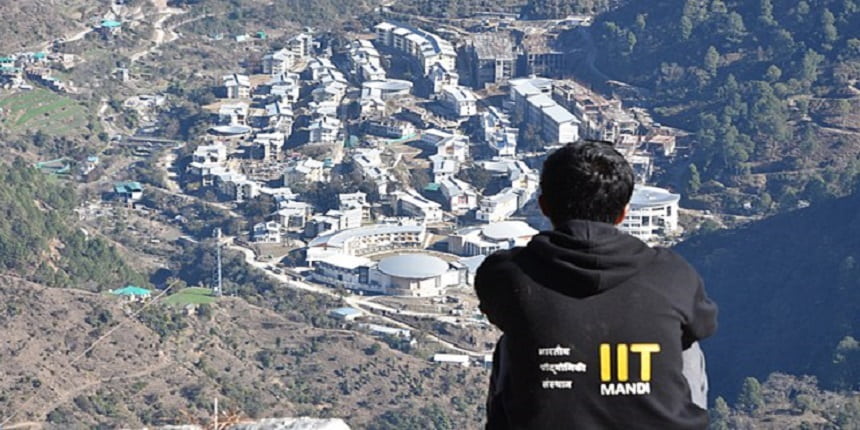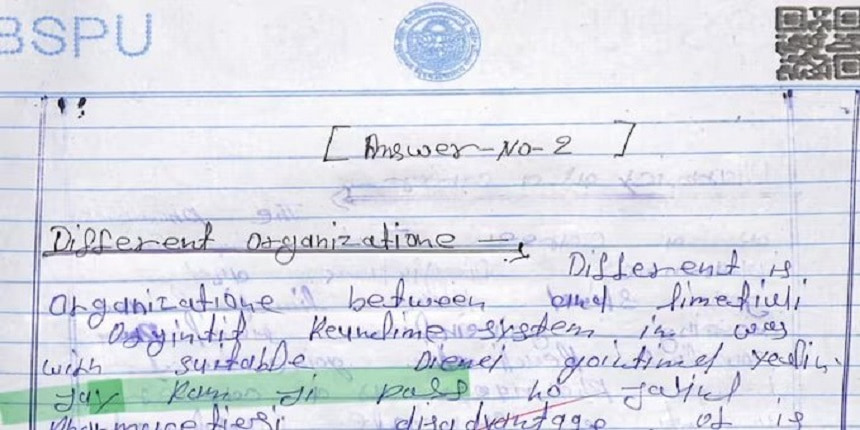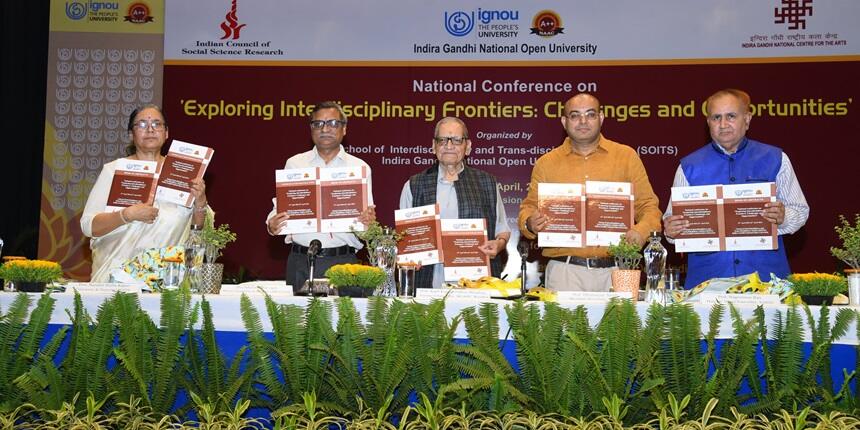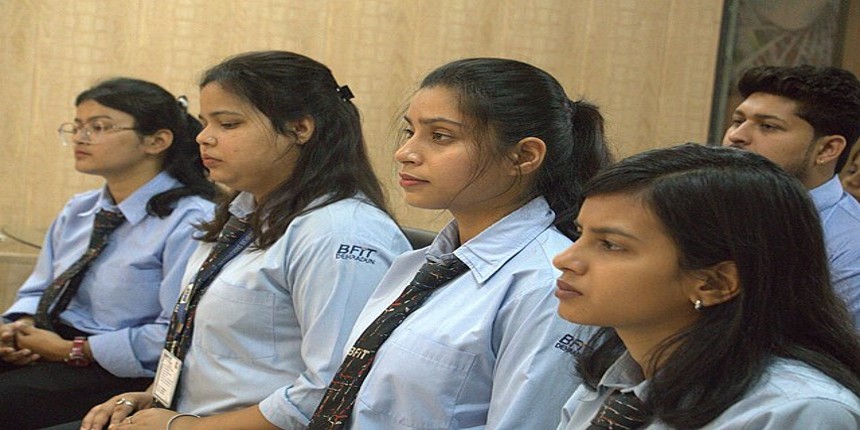Academic Bank of Credits: 1,800 institutions on board, only 30% able to upload data
Universities are linking registration with exam forms, tying up with district offices to get students APAAR, Academic Bank of Credits (ABC) IDs.
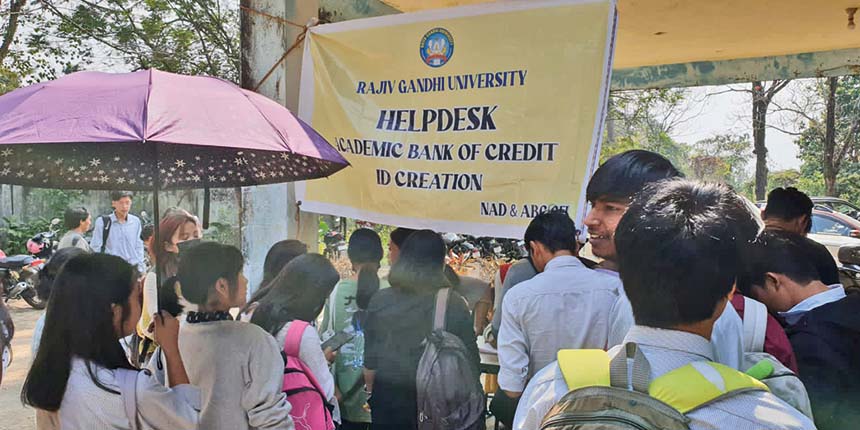 Help Desk at Rajiv Gandhi University, Arunachal Pradesh. (Source: Arunachal Pradesh govt social media)
Help Desk at Rajiv Gandhi University, Arunachal Pradesh. (Source: Arunachal Pradesh govt social media)Shradha Chettri | March 19, 2024 | 03:05 PM IST
NEW DELHI: The education ministry has set into motion the process for assigning unique identification numbers to all 30 crore students in the country. The Automated Permanent Academic Account Registry (APAAR), generated from the school level, will dovetail into the Academic Bank of Credit (ABC) system. This initiative – being described as “one-nation, one student ID” – will enable the tracking of students from school to higher education and maintain their academic records.
Institutions across the country are now taking steps to facilitate this student-id generation. They are embedding registration links on their exam forms; setting up interactive and bilingual notice boards; creating awareness videos and collaborating with district authorities to get students their 12-digit biometric-based identification numbers, or Aadhaar, on which the student ID is based.
Promoted as one of the most important pieces of digital public infrastructure (DPI) created by the Narendra Modi government, APAAR is a specialised identification system designed in alignment with the new National Education Policy (NEP) 2020. Like Aadhaar, it is a unique 12-digit ID using which students can store their credentials in one place, right from school to higher education.
For higher educational institutions, the APAAR and ABC IDs will eventually be used interchangeably. ABC houses the credits earned by students during their course of study, but only the institution can add credits to the ABC accounts.
As mandated in the National Education Policy 2020, the initiative is meant to facilitate credit transfer of students, allowing them to move across streams and higher education institutions with ease.
In case of school students, following consent from parents, the Aadhaar numbers are updated on the UDISE portal of the department of school education and literacy. Once this is completed, APAAR IDs are generated.
Data shared by the ministry of education shows that more than 25 crore APAAR IDs have been created by over 15,000 institutions and 35 lakh academic records mapped with IDs. Although implementation has been very patchy so far, the central government plans to have all education records of school students integrated into its ‘One Nation, One Student ID’ initiative by 2026-27.
As for ABC, 1,855 academic institutions had joined the platform by March, facilitating the registration of over four crore students. However, credit data is taking longer to map, with just 45 lakh academic records logged into ABC accounts.
Also read HC seeks Centre, UGC’s response to plea against enrolment in ABC with Digilocker through AADHAR
Admission, exam forms and admit cards
The Indira Gandhi National Open University has created the highest number of APAAR IDs so far and uploaded the most academic records. By February, it had created 20.38 lakh APAAR/ABC IDs and uploaded the academic records of 32 lakh students on Digilocker. All credit data of about 4.95 lakh students have been updated since 2021.
Nageshwar Rao, IGNOU vice chancellor, shared: “In our December 2023 exam, we tried to make APAAR ID compulsory in the examination form. Since then the numbers have been swelling up. With 35 lakh students registered with IGNOU, we would soon reach
our target.”
Delhi University, a central university, has uploaded the most credit data – 6,05,053 records for about 13,24,975 identifications.
Ajay Arora, controller of examination at DU, said: “It is a global system which will be beneficial for both students and institutions. Students can accumulate and redeem credits and accordingly certification will be awarded. They have the option of multiple entry and exit. In case of migration or movement to other institutions through ABC, there will be no requirement of physical intervention and submission. The only rider is that the shelf life of the credit is seven years.”
The state-run Yashwantrao Chavan Maharashtra Open University, Nashik, another distance education institution, has embedded the link for registration on the examination hall ticket.
Sanjeev Sonawane, vice-chancellor of the university, said: “Once the ABC was launched, we set up a committee to develop a strategy. When admission was going on online, we got the students registered. While filling the examination form, the link was provided. The counsellors were trained in about 2,000 learning centres and they communicated the same to the students.”
The university has so far created 6,31,000 ABC IDs and about 88,559 IDs have their full credit data. Although Savitribai Phule Pune University is ahead of it in the number of ABC IDs created, the credit data uploaded is just about 530.
The Veer Narmad South Gujarat University, Surat, collaborated with district authorities to get Aadhaar cards for students and link them with their mobile phones.
Kishorsinh Chavda, vice chancellor of the university, said, “Since the launch we have conducted a lot of awareness campaigns. For many students, Aadhaar cards were not linked with their numbers and so, we worked with the district collectorate. We have achieved 100% APAAR ID creation. About 30% of the students in our university are from the adivasi (tribal) areas. So, with ABC ID creation, we have also been able to address the digital divide”.
Also read JNU’s Hostel Mess: Students face water shortage, broken ceilings, crowding and fee hike
Academic Bank of Credit’s technical problems
Institutions are generating lakhs of ABC accounts and IDs but a closer look at the data shows that credit data are not being uploaded at the same rate.
Since it was launched in July 2021, about only 580 institutions have uploaded credits earned from 2021 to 2023, which constitute just about 31% of the total institutions onboard.
Ram Avatar, programmer and system analyst at DU who is working on this project, explained, “It is a good system, but the platform sometimes finds it difficult to take the volume. On most occasions, we just send in our data and it is updated by the people in the ministry. The platform also has issues when there is a need to modify the records. The edit button exists, but to make a change in one paper we have to redo the entire process. I have raised this issue on several occasions during consultation.”
Another official at a state university, who did not wish to be named, said: “With the choice based credit system, there are several combinations and so, for us, marking that and selecting it without any mistake is a tedious process. It will take time for the system to streamline and for universities to also develop a proper system.”
Some universities are also waiting for directions on handling the records of foreign students. “Aadhaar is required to create an ABC ID. For them, these numbers are not available. We do not really know how credit storage is to be done for them,” said an official of a central university in Uttar Pradesh.
Also read UK home secretary seeks review of graduate route that gave 50,000 Indians post-study-work option
Schools and APAAR
In Delhi, schools were asked to secure parents’ consent and Aadhaar details were updated. But in several states, mostly the rural areas, principals were not aware of the system.
Jyoti Arora, principal of Mount Abu Public School in Delhi, said, “We had about 10-15 students who did not have an Aadhaar card. We then spoke to the parents and asked them to apply. From the school’s end we just need to update the students Aadhaar number and the IDs are created by the ministry itself”.
However, principals in West Bengal, Kerala and other southern states said they are yet to hear from the education department on it.
“We have not heard anything from the department. For direct-benefit transfers under several schemes, we have records of Aadhaar of the parents and children. We have not been especially asked to update anywhere or get a consent,” said a government school principal from north Bengal.
On February 9, the ministry launched APAAR through the Common Service Centres (CSCs) in remote villages across the country. The CSC CEO said that the village-level entrepreneurs (VLE) will go to schools, enrol students, and provide them with the APAAR IDs.
Creating APAAR IDs
There are several ways in which students can create their unique ID. They can use the Digilocker, the UMANG app, or the ABC portal.
Through Digilocker and UMANG:
Sign in or up in any channel
Select the ‘Education’ category
Move to ‘ABC ID Creation
Service’Select ‘Institution’
Fetch ‘APAAR ID’
Using the ABC portal:
Log in to abc.gov.in
Select your institution
Enter requisite details and create ABC/APAAR ID
Track credit and academic activity
Since 2023, creation of an ABC ID is mandatory for college admission. In case of schools, as the National Credit Framework (NCrF) is being finalised, the process for credit storage has not yet started.
Follow us for the latest education news on colleges and universities, admission, courses, exams, research, education policies, study abroad and more..
To get in touch, write to us at news@careers360.com.
